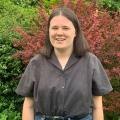A NEW book about fascinating archaeological excavations which have taken place at Berkeley Castle has recently been published.
The book - named Berkeley Castle Tales - follows the partnership between the University of Bristol and the 12th century castle, as well as the discoveries made along the way.
Over the course of 14 years, the team unearthed the remains of an Anglo-Saxon minister, a defensive feature from the English Civil War, and pottery from the late 9th to early 11th centuries.
The team also found an Anglo-Saxon silver halfpenny of King Edgar (the Peaceable) which dates between 959–975.
The project - which ran from 2005 until 2019 - was featured on a number of TV shows, including BBC's One Show, Countryfile, Flog It, and Digging for Britain.
It started after the then castle director approached staff at the university with the offer of a long-term research project in 2003.
It eventually began with an initial visit by the late Professor Mick Aston, Professor Mark Horton, and Dr Stuart Prior, and the first season of fieldwork at the castle was conducted in 2005.
This then developed into a longer research project involving university students, nearby schools and colleges, summer schools, and volunteers of all ages.
It eventually finished with the university's final season of excavation in the summer of 2019.


The project’s aim was to build up a detailed picture of the history and archaeology of the castle and the town of Berkeley.
Dr Prior said: “It was anticipated that the project, on such an important, prestigious and largely undisturbed site, would add to our knowledge and understanding of the early medieval period and subsequent changes in landscape and society with the coming of the Normans, and the erection of a castle on the former Saxon site.”
“Excavating at Berkeley Castle was a privilege, I actually had no idea we would be there for so long.
"The excavations and archaeological work were outstanding.
"Many students have gained careers through digging at the site, and I have made many good friends at Berkeley as a result.

“We have learnt a great deal about the early history and archaeology of Berkeley through the excavations and surveys that were conducted by students, staff, and volunteers over the 19-year period.
“We can now ascertain that Berkeley probably started its life as a Roman settlement, had an Anglo-Saxon Minster, witnessed Norman castle building, developed into a small medieval town, and played a part in the English Civil War, also, having some of its buildings, forcibly destroyed, at that point.”
Charles Berkeley, owner of the Berkeley Castle Estate, added: “It was so interesting to be a part of this dig, and the finds have enabled us to learn far more about the history of the castle, estate, and wider area.
“It is wonderful to have Berkeley Castle Tales as a record of this fascinating project.”
You can buy the book here - tinyurl.com/5xvanpkf
Some of the key findings and discoveries included:
- An Anglo-Saxon silver halfpenny of King Edgar (the Peaceable) 959–975; the Great Great Grandson of Alfred the Great.
- The remnants of two fishponds and a building which may possibly be associated with the medieval hospital complex of Holy Trinity (c. 1170–1547).
- A possible nunnery which appears to have formed an integral component of the minster, whose chapel, sources suggest, was located adjacent to the site where two burials were unearthed.
- The remains of the now-vanished St Michael’s Lane and two Tudor houses, which are shown on a 1544 map of Berkeley and the remains of the castle’s Medieval Barn.
- A ditch between the castle’s Outer Ward and St Mary’s church which was a defensive feature from the English Civil War (c. 1645) rather than a medieval castle moat as previously thought.
- Pottery and a millstone from the late 9th to early 11th century – associated with the minster.
- An Anglo-Saxon silver halfpenny of King Edgar (the Peaceable) 959–975; the Great Great Grandson of Alfred the Great.






Comments: Our rules
We want our comments to be a lively and valuable part of our community - a place where readers can debate and engage with the most important local issues. The ability to comment on our stories is a privilege, not a right, however, and that privilege may be withdrawn if it is abused or misused.
Please report any comments that break our rules.
Read the rules here